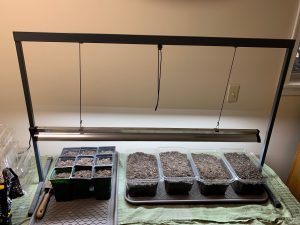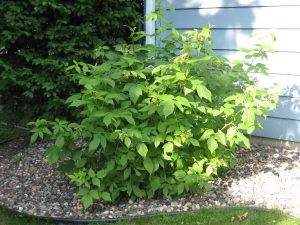Hurray! March is finally here. If you started some cool weather crops indoors in February, you can begin transplanting into the outdoor garden in the middle of the month. As an alternative, garden centers will begin selling transplants of cabbage family crops and lettuces to be planted on the same schedule. Lots of other plants can be direct seeded into the ground earlier in the month. Vegetable gardeners are off and running in 2021.
Activity gets underway for fruit growers as well. It is time to fertilize and care for trees and to plant bramble fruits and blueberries.
Let’s review some tips for getting things going.
Manage Your Soil for Best Growing Results
If you haven’t had a soil test for a few years, a new test makes sense. They are a valuable tool for maintaining your soil at optimum fertility and pH levels. They are recommended every three years. A soil sampling kit complete with instructions is available at your local Virginia Cooperative Extension office. In Charlottesville/Albemarle the office is located in the Albemarle County Office Building just off 5th Street Extended. Kits are located at both the Stagecoach Rd entrance and inside the double doors on the police side of the building, in marked plastic bins. Instructions and sample boxes are both there. Be sure to take the appropriate instruction sheet, home gardener vs commercial grower. Samples should be mailed with payment directly to the Virginia Tech lab and results will be issued directly to the sender. Please don’t return the sample boxes to the local Extension office for shipment. Call the Extension office at 434-872-4580 with questions. For additional information on soil testing, check out VCE publication 452-129: Soil Sampling for the Home Garden.
Regardless of your soil condition, adding organic matter to your soil will improve it, and fully-decomposed compost is the best way to do it. It improves soil structure and water infiltration, while absorbing and holding moisture longer, a real benefit during our hot, dry summers. Compost can be purchased, but can also be made at home using yard and organic kitchen wastes — plus a little bit of effort to keep piles moist and aerated. Instructions for making compost at home can be found in the January 2018 issue of The Garden Shed. If you start a compost batch now, it should be ready for use for your fall planting later this year.
If you have a heavy clay soil in your garden and you aren’t sure how to best manage it, take a look at the article Gardening in Clay in the July 2018 issue of The Garden Shed. Surprise: the secret is adding decomposed organic matter!
When adding compost to beds, spread a couple of inches on the surface and scratch it into the top 2-4 inches of soil. Let soil organisms carry it deeper through natural processes.
If you are worried that your soil is compacted, rather than till it, insert a broadfork or digging fork as deeply into the bed as possible and rock it back and forth to aerate the soil without destroying the soil structure. Work your way across the beds, advancing several inches with each fork insertion.

Weed Management
Best practices for preparing soil for planting now emphasize minimum tilling. Old practices of deep tilling or turning soil over are discouraged, except for new beds. Tilling breaks up soil structure, increases compaction over the course of the growing season and can bring buried weed seeds to the surface. The biggest issue no-till raises is probably weed management. Hopefully, most home gardeners are not using glyphosate products to kill garden weeds any more. Old time mechanical methods of weed hoeing and pulling are great but a lot of work. A practice that is popular with organic market growers is called occultation. It involves covering beds for 4 weeks or longer with a black tarp or plastic sheet, secured around its edges. This denies light, smothering weeds and speeding decomposition of trimmed cover crop remains. Growers report season-long benefits in stifling weed growth, providing a welcome reduction of weeding labor during the hot summer months. Residue can be used as mulch or composted. The post Black Covers can put Weeds to Bed for Good from the Maryland Extension provides more detail.
It’s Time to Plant
According to Virginia’s Home Garden Vegetable Planting Guide from the VA Cooperative Extension, March is the time for outdoor seeding of cool weather vegetables including beets, carrots, kale, collards, mustard greens, lettuces, peas, radishes, spinach, and turnips. Home-started or purchased transplants that can be planted in the garden this month include broccoli, cabbage, cauliflower, leeks, onion sets, and new asparagus plantings. These dates refer to hardiness zone 7a, but the Guide covers corresponding information for all of Virginia, zones 6a to 8a. It also includes quantity guidance. To protect your transplants, remember to harden them off by putting them outside for progressively longer periods during the day over a 2-week period when daytime temperatures are above 50 degrees. You can find lots of good advice for seed starting and transplanting in the VCE publication Plant Propagation from Seed and the February 2021 Garden Shed article How to Start Your Garden Seeds.

If you are a seed starter, be mindful of the typical last frost dates for your area. In 7a, it is April 15-25. Starting warm weather crops, tomatoes for instance, 6-8 weeks ahead of planting, means starting seeds indoors in early to mid-march, giving them 6-8 weeks to get ready for transplanting outside.
Fruit Growing
If you are a fruit grower, spring fertilization of fruit trees should occur about 3-4 weeks before active growth begins. Scatter fertilizer evenly under the tree, starting about 2 feet from the trunk and extending just beyond the drip line or end of the furthest branches. A soil test should be performed prior to applying fertilizer. For additional information on fruit trees, visit VCE Publication 426-841, “Tree Fruit in the Home Garden.”
The optimum time to prune fruit trees is just before they bloom. Pruning allows the tree to direct nutrients to branches that will bear high quality fruit. The object is to remove dead, diseased, or damaged wood. Also, remove shoots that are growing straight up or straight down as neither provides for good fruit development. Growth crisscrossing the center of the tree should be removed as well. A more open tree allows greater light penetration and air circulation, increasing fruit quality and reducing disease and insect pressure. For additional pruning information, visit VCE Publication 422-025, “Physiology of Pruning Fruit Trees.”

Bramble fruits such as raspberries and blackberries may be planted in mid-to-late March. Plant in moist, well-drained soil containing large amounts of humus or organic matter. For weed control, mulch around newly-planted brambles with a hardwood or softwood mulch. For additional information on how to grow bramble fruit, review VCE Publication 426-840, “Small Fruit in the Home Garden.”
Now is the time to plant blueberry bushes. Different varieties of blueberries have different requirements for “chilling hours” — the number of days with temperatures between 35° and 45°F. They also require very acidic soil for best growth. It makes sense to make careful choices when acquiring plants. The Garden Shed article Blueberry Cultivation in the Home Garden offers further guidance.
If you have established blueberry plantings, the publication Pruning Blueberries from the Maryland Extension offers excellent pruning advice.
I hope this information provides guidance and motivation to help you get things going. It’s great to be out in the garden again. See you next month.
Resources:
Virginia’s Home Garden Vegetable Planting Guide and Recommended Planting Dates,” Va. Coop. Ext. Publication 426-331, http://pubs.ext.vt.edu/426/426-331/426-331.html
“Tree Fruit in the Home Garden,” VA Coop. Ext, Publication 426-841, https://www.pubs.ext.vt.edu/content/dam/pubs_ext_vt_edu/426/426-841/426-841_pdf.pdf
Featured photo: “Digging in the garden” by Ben Kreeger is licensed under CC BY-NC-SA 2.0